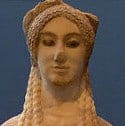Escorted Tours of Greece
Greece is a land irrevocably connected in our imagination with the glories of the ancient world: the magnificent temples of Delphi and Olympia; the military might of Athens and Sparta; the land that gave birth to democracy, philosophy, theatre, beautiful art and history. It lives up to this billing, but goes far beyond.
Average rating 5 out of 5 from 754 reviews for Escorted Tours of Greece, according to AITO reviews.
Greece is a land of deep blue seas; long, sandy beaches; and strings of beautiful islands. It has a fabulous cuisine, with the emphasis firmly placed on fresh produce simply cooked, best sampled in a family run taverna. From crystal waters to delicious food, golden sunshine to abundant antiquities, Greece has all the ingredients for a wonderful cultural holiday.
Discover this amazing country on one of our expert-led land-based tours in Greece or take a cultural gulet cruise through the Greek islands. See our schedule below.



